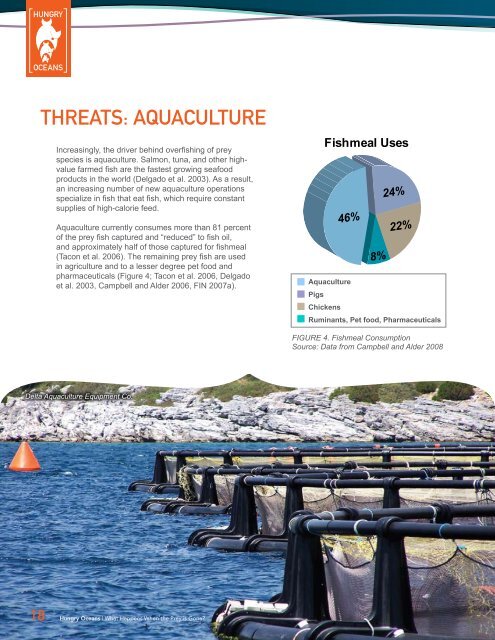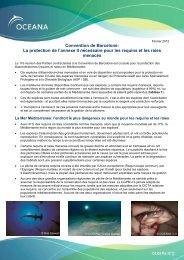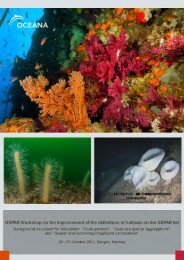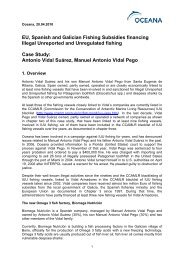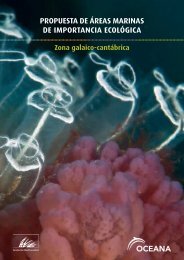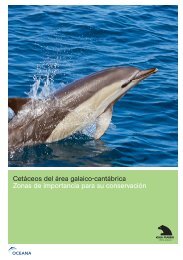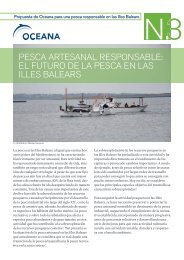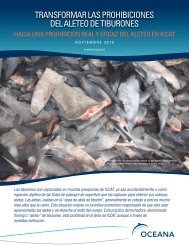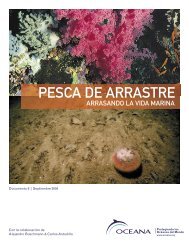Create successful ePaper yourself
Turn your PDF publications into a flip-book with our unique Google optimized e-Paper software.
HUNGRY<br />
OCEANS<br />
THREATS: AQUACULTURE<br />
Increasingly, the driver behind overfishing of prey<br />
species is aquaculture. Salmon, tuna, and other highvalue<br />
farmed fish are the fastest growing seafood<br />
products in the world (Delgado et al. 2003). As a result,<br />
an increasing number of new aquaculture operations<br />
specialize in fish that eat fish, which require constant<br />
supplies of high-calorie feed.<br />
Aquaculture currently consumes more than 81 percent<br />
of the prey fish captured and “reduced” to fish oil,<br />
and approximately half of those captured for fishmeal<br />
(Tacon et al. 2006). The remaining prey fish are used<br />
in agriculture and to a lesser degree pet food and<br />
pharmaceuticals (Figure 4; Tacon et al. 2006, Delgado<br />
et al. 2003, Campbell and Alder 2006, FIN 2007a).<br />
Delta Aquaculture Equipment Co.<br />
18 <strong>Hungry</strong> <strong>Oceans</strong> | What Happens When the Prey is Gone?<br />
Fishmeal Uses<br />
Aquaculture<br />
Pigs<br />
Chickens<br />
Ruminants, Pet food, Pharmaceuticals<br />
FIGURE 4. Fishmeal Consumption<br />
Source: Data from Campbell and Alder 2008


